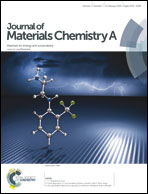Nanoporous metal/oxide hybrid materials for rechargeable lithium–oxygen batteries
Abstract
Lithium–oxygen batteries have attracted considerable attention due to their expected specific energy being far higher than that of lithium-ion batteries. The high charge overpotentials of the cathodic oxygen evolution reaction of insulator lithium peroxide is one of the critical challenges for practical implementation of lithium–oxygen batteries, which results in low energy efficiency and poor stability of cathodes and electrolytes. Transition metal oxides are known to be the most active electrocatalysts that can dramatically decrease the charging overpotentials of rechargeable lithium–air batteries. However, the poor electrical conductivity of these oxide electrocatalysts, such as RuO2, MnO2 and Co3O4, limits the charge transport of cathodic reactions and the full utilization of their catalytic activities. Herein, we exploit the high oxygen evolution reaction activities of oxides by incorporating insulator oxides into the pore channels of highly conductive nanoporous gold to form three-dimensional nanoporous core–shell composites. The hybrid catalysts as the cathodes of rechargeable lithium–oxygen batteries show highly reversible cathodic reactions at extremely lower overpotentials for high efficiency lithium–air batteries, arising from the synergistic effect of high conductive nanoporous gold (NPG) and catalytically active metal oxides.


 Please wait while we load your content...
Please wait while we load your content...